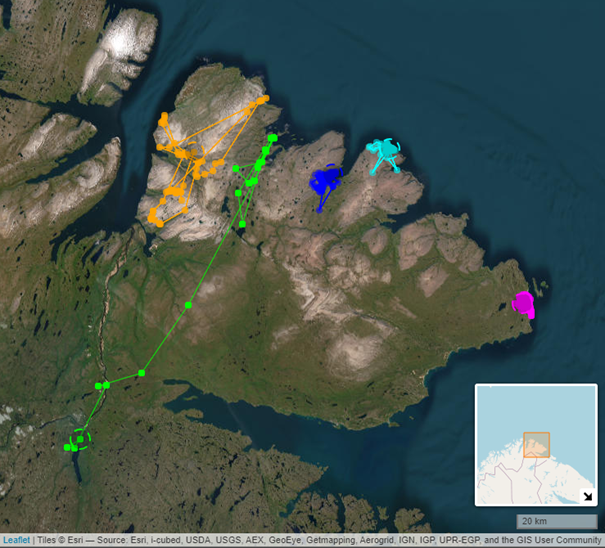Should I stay or should I go?
Published on: 13. February 2025
It is now winter on the tundra, and it is fascinating to see how red foxes on Varanger Peninsula cope with these conditions. This winter is especially hard on foxes because the population cycle of small rodents is at a 4-year low. This means that foxes need to work extra hard to find enough food.
One of our GPS-collared red foxes. Photo: Joachim Henriksen
This winter we track 5 foxes with GPS collars. The map below shows their movements during the last month. You can see that many foxes prefer to stay at the coastline where they are able to scavenge marine resources that get washed up by the sea. The fox in dark blue stays close to the town of Båtsfjord where he is likely to get scraps of human waste. Foxes in the inland (e.g. in orange) have to use much bigger areas to survive. Even more fascinating is the fox in green, who decided to leave the tundra this weekend. In two days, he made the 100+ km journey to the boreal forest in Finland. We are very excited to see where he ends up.

Map of the last months movement of our five GPS-collared red foxes. Map: COAT
This type of long-distance movement in winter has also been described in red foxes on the Arctic tundra in Canada (see for example Warret Rodriguez and others 2023). Foxes likely need to make very tough decisions on whether they should stay in their home territories in winter and risk starvation when food resources get low, or whether they should risk moving to a new place. The fox in green clearly chose the latter option, we wish him luck!
Follow the live tracking of our foxes!